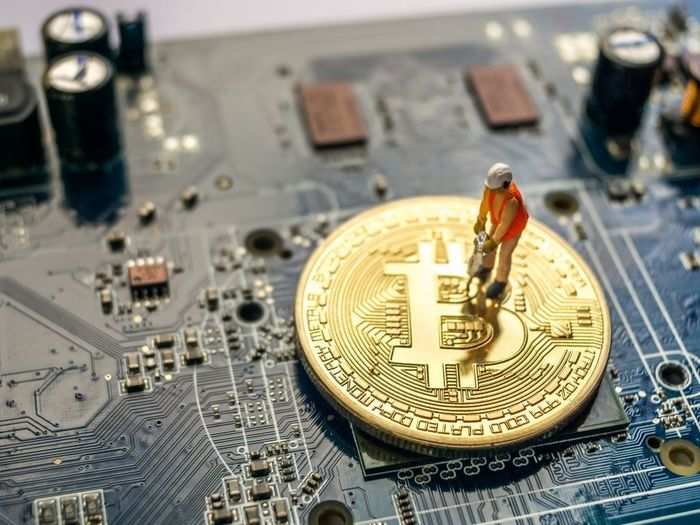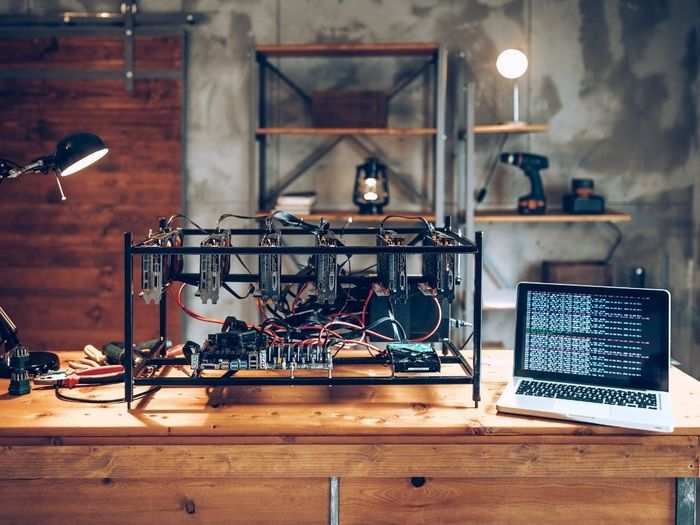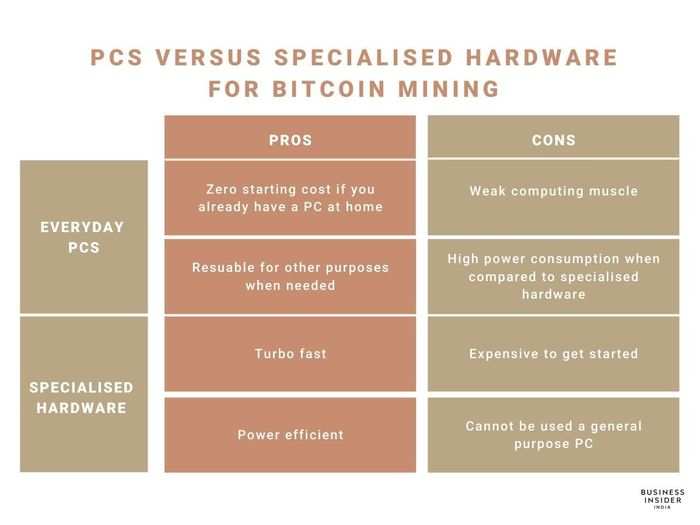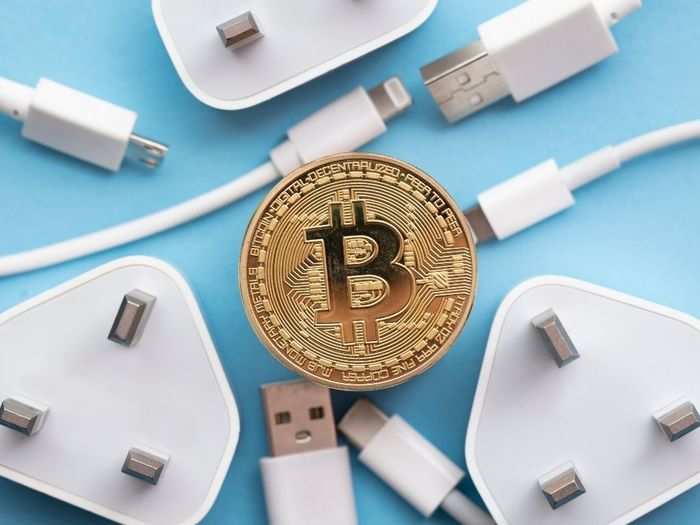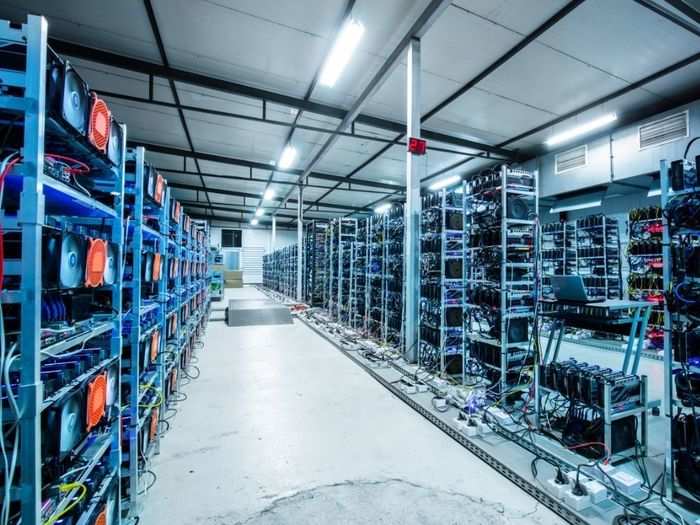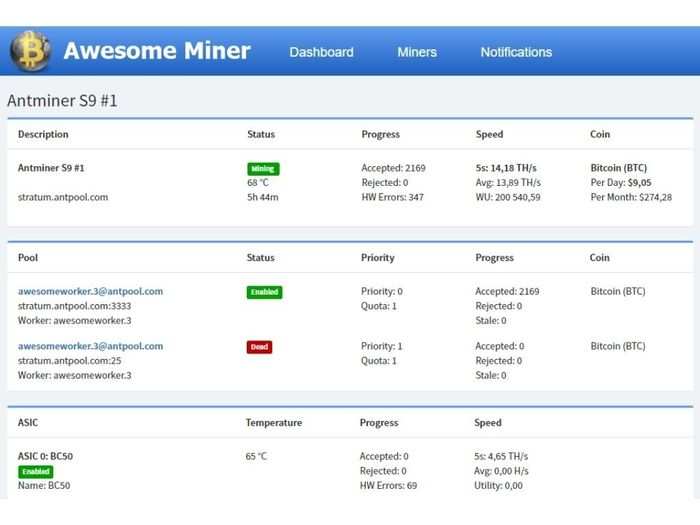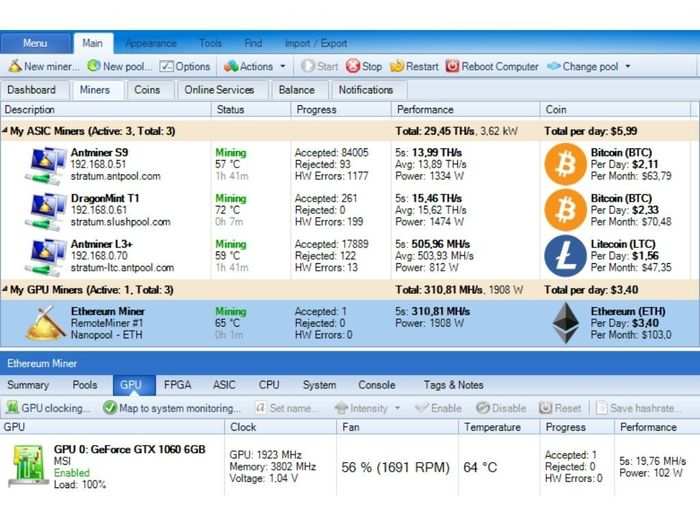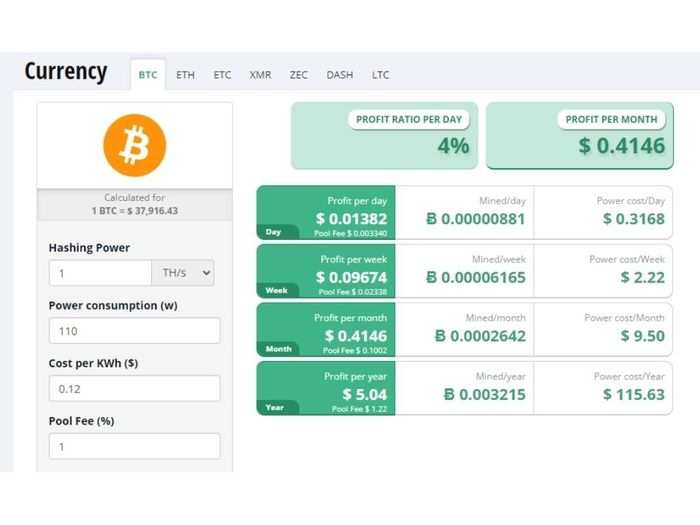Canva
- Mining is the method of generating Bitcoin using computing power.
- Miners can use a variety of combinations when it comes to mining strategies to maximise their benefits.
- Cost of hardware and electricity tariffs have the biggest impact on profitability.
Most people buy Bitcoin off crypto exchanges, but that’s not the only way for a person to get their hands on the world’s oldest cryptocurrency — they can also mine for it. Unlike mining for gold that used to happen on river beds and deep within caverns, Bitcoin mining happens on the blockchain.
All a person really needs is a computer that isn’t older than five years. However, that alone doesn’t guarantee success. Mining for Bitcoin is like playing a game of fastest finger first. The more computing power you can offer, the better your chances of actually hitting gold, or in this case, Bitcoin.
Here’s a quick guide to everything you need to know if you’re thinking of mining for Bitcoin:
What is Bitcoin mining?
Canva
Simply put, Bitcoin mining is solving mathematical equations — just really fast. That is why you need massive computational power to not only solve these mathematical queries quickly, but also quicker than everyone else in order to reap the rewards.
What is a Bitcoin mining ‘rig’?
Canva
A ‘rig’ isn’t as scary as it sounds. It can be any everyday computer, made up of a CPU, motherboard, RAM and storage. The only difference is the graphics processing unit (GPU) or the ‘video card’.
When a computer isn’t mining, the GPU is what powers games, videos and other applications. Its computational prowess is ideal for Bitcoin mining’s heavy-duty requirements. In fact, a run-of-the-mill laptop with a high-performance GPU is likely to do a better job of mining for Bitcoin than an expensive laptop with an average GPU.
In the race for Bitcoin, specialised hardware can be another option
BI India
Instead of using a personal computer, Bitcoin mining can also be done using specialised hardware called application-specific integrated circuits (ASICs). The catch is that a particular ASIC can only be used to mine for a particular cryptocurrency. So, for Bitcoin, an ASIC miner would be optimised to solve its particular algorithm.
For example, an AntMiner S19j ASIC machine is orders of magnitude more efficient at mining than the fastest gaming PC. But such a specialised machine can cost over $10,000 and cannot be used to game or for office productivity.
A miner’s biggest cost is electricity
Canva
Electricity will be the largest expense over the life-cycle of a mining machine. When you run one or many machines continuously, possibly drawing hundreds of Watts each, this adds up very quickly.
Being located in a place with higher priced electricity, or needing power backup can drain most gains one makes. This is one of the reasons that the largest Bitcoin miners operated from China, when electricity was priced lower than most developed countries.
The more the merrier
Canva
Pooling many machines together to increase compute power improves the chance of success. Running a single machine no matter how powerful, has a low chance of yielding Bitcoin. Moving up to a Bitcoin farm involves mining on a number of machines, with all of them logging in as the same user.
Cloud mining is a niche option. In this case, a user simply rents processing power directly instead of buying the hardware and paying for electricity.
How do you actually get Bitcoin?
Screenshot from Awesome Miner
Mining Bitcoin works on the basis of ‘proof of work’, rewarding computing power with cryptocurrency coin.
A miner will solve complex mathematical problems, to securely add one block of transactions – currently worth 1 megabyte (MB) – to the blockchain.
The first individual or pool to solve the math and add a block, is deemed to ‘win’ it, and is allocated Bitcoin.
How many Bitcoin one gets in return will vary, and keep reducing over time, as only 21 million Bitcoin will ever exist in total. All miners will have a copy of the blockchain – a ledger of all transactions ever made using Bitcoin – stored on their machine. This copy occupies 356 GB, as of July 2021.
What does Bitcoin mining actually look like?
Screenshot from Awesome Miner
In general, a reasonably powerful gaming desktop or laptop with hardware released in the last five years, has a good chance of paying for itself and the electricity used, over the course of a year.
Keep in mind, a PC kept running around the clock for a year may need refurbishing of its cooling systems to continue functioning well.
Visually, there is nothing interesting on screen when mining is in progress. There may be a command prompt window, or a simple graphical status of active machines.
When running your machine as part of a pool, a number of statistics would be visible on the website of the pool, which users can use to improve their results. Any mined Bitcoin is shared among all users on a predetermined formula, so gains in a pool are denominated in fractions (for example 0.0027 Bitcoin).
For individual miners, the fun kicks in a few months later, when they are able to sell the coin they generated.
Is Bitcoin mining profitable?
Screenshot from CryptoCompare, an online calculator
As with anything else, Bitcoin mining isn’t always profitable and goes through cycles.
Just like during the Californian Gold Rush, Bitcoin mining has many instances of businesses that sell hardware and services to miners being more profitable than the miners. Bitcoin is still in focus though, so mining makes a lot of economic sense.
For first-timers, online calculators take hardware and electricity costs as input, to calculate probable profits and clarify if mining is profitable for you.

